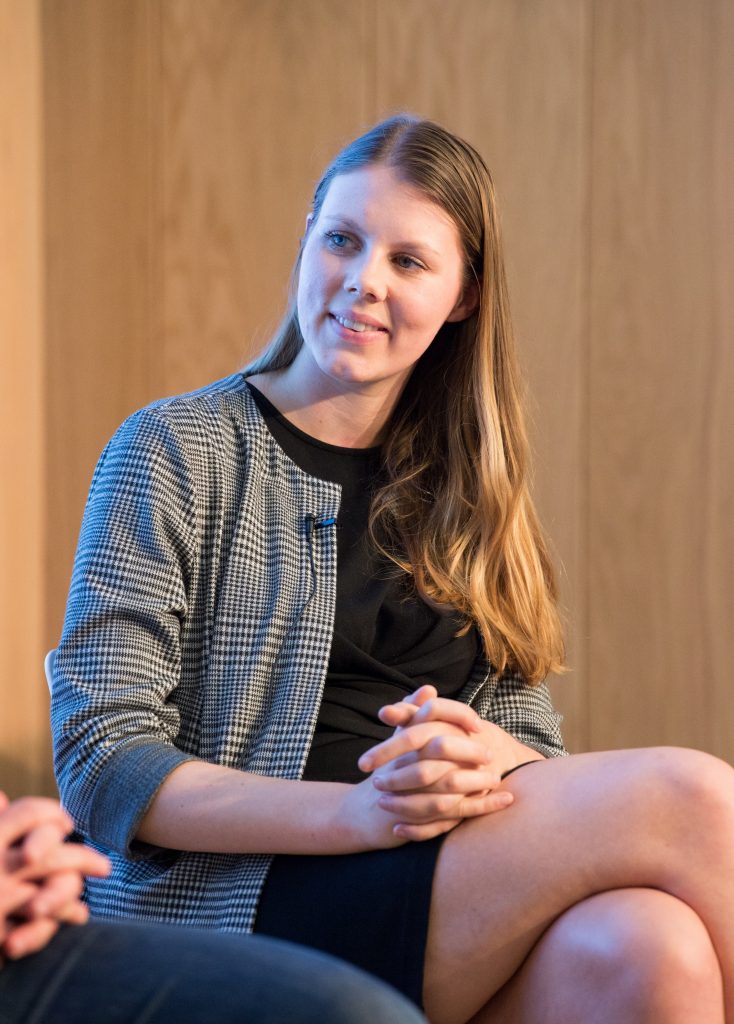Building a successful marketplace business is notoriously difficult. Marketplaces Connect 2018 provided a chance to hear reports from the front line, and hear the stories of some of the best marketplace entrepreneurs.
Jean-Michel Chalayer, Co-Founder and CEO of LeSalon, the marketplace for beauty services in your own home, moderated the panel. Joining Jean-Michel were Sandrine Zhang Ferron, Co-Founder and CEO of Vinterior, a marketplace for antique and independent furniture sellers; Sebastien Goldenberg, CEO of The House Shop, the platform for residential property rentals that provides services for landlords; and Marja Verbon, Co-Founder & CEO of Jump.Work, the B2B talent platform for matching professionals to roles based on behaviour as well as CVs.
Jean-Michel:

How did you get started – did you focus on the demand or supply side?
Sandrine:
From early experiences of buying furniture for my own home, it was clear that the need was more acute on the supply side, because sellers were not satisfied with the available sales channels. Sellers were keen to join the platform, so we built tech to on-board them, which gave time to bring buyers to the marketplace.
Sebastien:
Our approach was to set up a freemium model for estate agents to massively increase supply side very quickly to get inventory for traffic, which then allowed us to go to our real target market of private landlords.
Marja:
We started with buyers – companies who were looking to hire, but having tested in advance that professionals were interested in being profiled for jobs. It needed a different approach on both sides. With B2B, it’s more about sales with getting companies on board and building a platform they were happy with. And for the professionals, it was about building a self-serve product that was highly scalable.
Jean Michel:
How do you know when your platform is working?
Marja:
Our early B2B metrics looked at whether companies were coming back to us and were happy. In the beginning, you may not capture the full transaction, but if you are consistently matching candidates to the final round, this becomes a core success factor. The challenge is how you cross the bridge of getting them to transact.
Sandrine:
At Vinterior, we are driven by engagement metrics, such as net promoter score which shows whether we are achieving ‘word of mouth’ recommendations.
Sebastien:
We are focused strongly on the supply side – making sure that landlords get the traction they need in terms of inquiries, reviews and quality of transactions. We realised early on that landlords were transacting but not telling us. So we made our system so cheap that it was a ‘no brainer’ to use it, enabling us to develop KPIs focused on the number of reported transactions.
Jean-Michel:
How do you cope with the problem of unreported transactions outside platform?
Sandrine:
It is inevitable there will be some ‘leakage’. Your first reaction should be “carrot and stick” – put in place some rules to promote good behaviour and sanction the bad, with light monitoring and very transparent communication. In the end, you need to bring enough value for them to choose not to leak. For buyers, that’s about protection issues – guarantees and returns. And for sellers, it’s more about building relationships. They ideally should view you as a long term partner who brings them value, rather than just a ‘necessary evil’.
Marja:
For us, it is about creating value at all stages of the transaction, for example our software tool that companies use to manage the hiring process. Also it helps that our pricing is spread over 12 months to guarantee that the hire was successful. So it’s like an insurance policy.
Jean-Michel:
At LeSalon, because we go to people’s houses, there is always the risk that someone wants to pay by credit card. But our approach is that we shouldn’t punish – the carrot incentive always works best.

Jean-Michel:
How do you prioritise getting volume of users vs. making money?
Sandrine:
Growing the marketplace is more important than getting profit. We started with 20% commission, but then decreased this to 15% to encourage more sellers to the join platform. A competitive price made it a ‘no brainer’ for sellers to join, which as a consequence also benefited buyers, because there was less mark-up.
Sebastien:
We focused heavily on building the traffic and the user experience, acquiring supply and inventory from landlords and creating long term relationships to build the ‘stickiness’ of the marketplace before starting to introduce any product. We don’t charge a commission on transactions, but instead make money by selling financial services when they transact.
Marja:
At Jump.Work, we monetised from day 1, because it’s an important qualification for professionals that the roles are real and that companies have an intention to hire.
Jean-Michel:
How do you manage liquidity issues – balancing two sets of customers to have enough of each to make sure both sides are happy?
Sandrine:
Our focus has always been on building supply as quickly as possible by making it low cost. If a buyer only sees 20 items, they don’t come back. While you are building supply, you can engage buyers in other ways by talking about market trends and building a community.
Sebastien:
The letting business – especially in big cities – is completely unbalanced, with more demand than there are properties. It is important to focus on supply and building trust in a supply- led business.
Marja:
Some recruitment market sectors are demand-led, e.g. developers can pick own job. But in our markets there is an oversupply of candidates, so the challenge is to find the right ones.
Jean-Michel:
How do you make sure both sides grow at the same time?
Sandrine:
It is important to monitor the buyer-seller ratio in the market…
Sebastien:
With an unbalanced market that was focused highly on supply, we started to refocus on the demand side to get the right demand for the properties we had. But the massive attraction of our platform is having a unique supply from private inventory, so we remain highly focused on this.
Jean-Michel:

Have you looked at other verticals?
Marja:
We are focusing on specific role sets to create liquidity with a replicable model that we can use in other role sets. For example, working on legal roles is very replicable. Ultimately, we only want to work in areas where we can create liquidity in that pool. It is about being systematic in your focus and having a rollout plan for that focus. It’s the same with cities; we recently launched in Birmingham, where getting liquidity is a challenge that takes two weeks to see a marketplace function. You have to keep focused and be able to say “no” to serve the users you have in a very good way.
Jean-Michel:
How do you get investors to trust you?
Sandrine:
You need to focus on developing your business and getting some traction first.
Sebastien:
EU based investors expect revenues much earlier than in the US, where it is enough just to have an audience. We were very transparent with our investors about growing our audience before we used our tech team to release products. Basically you have to say what you do and do what you say.
Marja:
Transaction values in the talent industry are relatively large. We have a lot of permanent roles on our platform and the recruitment fee is 12%. Our focus is to get repeat business from clients and move from SMEs who make a couple of hires a year to bigger firms who make a couple of hires a week. We focus on how can we get customers who continue to bring value.
Jean-Michel:
What would you recommend for people to start building a successful marketplace business?
Sandrine:
From the start, choose your side; choose which side of the marketplace is more critical to the success of the business, then define your KPIs and goals around that priority and make sure your team is aligned – capture data on a reporting dashboard and share that with the team.
Sebastien:
Be agile, don’t try to build the biggest product ever, build something quite light and bring it to market. If you are right, you will get massive uptake and if you are not right, customers will tell you.
Marja:
When you are running a marketplace, you need to hire great people in both areas because you will be solving double problems.
Jean-Michel:
Don’t wait and plan too much, get out and do it, get feedback from customers.
Did you like ‘Building a successful marketplace business’?
If you liked this article, check write-ups from other Marketplaces Connect 2018’s presentations. Andrew Hooks, Carwow’s COO, shared his experience scaling one of the fastest growing startups in Europe in this insightful summary: 5 marketplace scaling lessons. Isomer Capital‘s Joe Schorge, Piton Capital‘s Andrin Bachmann and Felix Capital‘s Antoine Nussenbaum, delivered a brilliant panel on how to raise funds for your marketplace. And Launchworks & Co’s Laure Claire Reillier presented her seven principles for a winning marketplace strategy.

Jean-Michel Chalayer, CEO of LeSalon, Sebastien Goldenberg, CEO The House Shop, Sandrine Zhang Ferron, CEO of Vinterior and Marja Verbon COO Jump.Work
